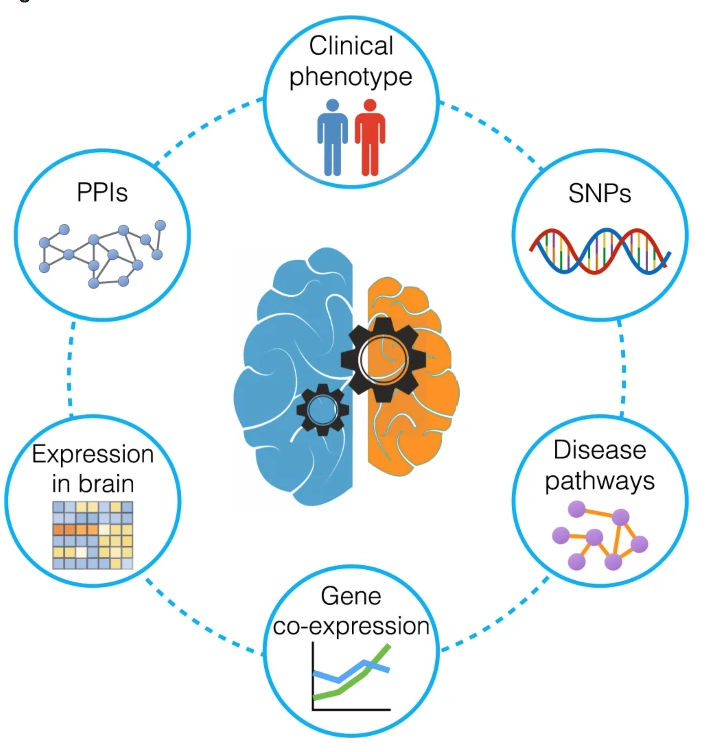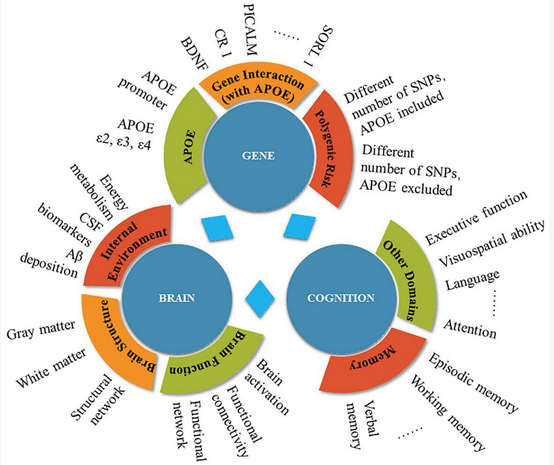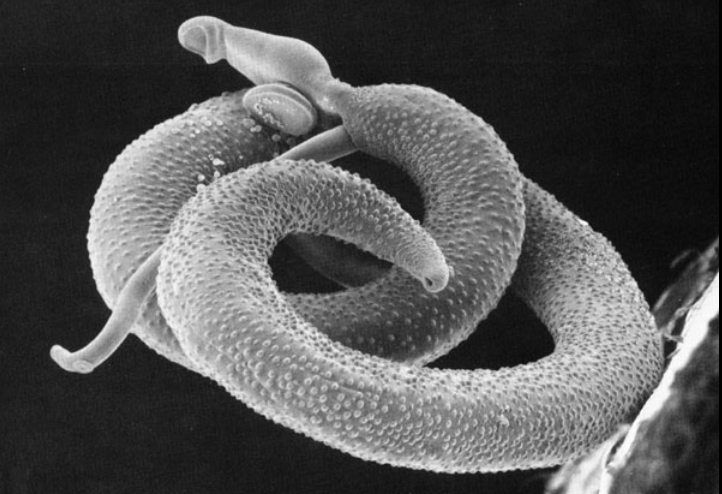
The ability to link specific genetic features with particular diseases is among molecular biology’s greatest achievements.
But there’s a downside to that scientific triumph: it has oversimplified the picture of the relationships between genotype, environmental factors, gene expression, and health or illness, and created blind spots in our understanding. The truth is, there are many variables related to genotype that cannot be fit neatly into molecular biology’s linear cause-and-effect framework.
Through the lens of evolutionary biology and evolutionary genetics, we can better appreciate the complexities by which a particular genotype evolves and adapts to its environment.
One of the most important drivers of this evolutionary process is the interaction between our human genome and the myriad microorganisms living in and around us. Microorganism interactions exert strong evolutionary pressures, which often favor one genotype over another.
During the decades of molecular biology’s ascent, leading scientists chose to ignore the fact that while certain genotypes can, in some contexts, cause disease, they also simultaneously confer protection from certain pathogens. The most striking example of this is the “sickle cell gene” which is linked to a particular form of anemia but also raises resistance to malaria—a clear survival advantage in regions of the world where that disease is prevalent.
Our current medical system favors molecular biology’s linear and predictable models, where a genetic trait becomes synonymous with a specific diagnosis. It has relegated evolutionary biology to the margins.
As a result, we are often blind to the adaptive nature of a particular genotype, and we fail to recognize that a trait that “causes disease” in one set of environmental conditions can be beneficial in others. And vice versa.
During the decades of molecular biology’s ascent, leading scientists chose to ignore the fact that while certain genotypes can, in some contexts, cause disease, they also simultaneously confer protection from certain pathogens.
Environmentally-driven pleiotropy is a selective evolutionary force that tends to create fitness trade-offs. If the environmental pressures diverge from a genotype’s evolutionary past, new diseases begin to appear.
Pleiotropy, by definition, refers to genes that influence two or more seemingly unrelated phenotypic traits. It is an important, though often overlooked phenomenon.
By putting disparate discoveries from molecular biology into the context of evolutionary genetics, we see a much bigger mosaic in which we can better understand the effects of thousands of genes, their pleiotropic functions, and the environmental factors and microorganisms that invoke their appearance in the gene pool. This viewpoint also opens new perspectives on how genetic traits relate to modern diseases, and how to envision more effective therapies.
ApoE4 & Evolutionary Mismatch
Consider the ApoE4 gene, widely considered to be a major genetic “culprit” in Alzheimer’s disease and other forms of dementia.
While the link between ApoE4 and Alzheimer’s is clear, a recent study suggests that in some environments, carriers of the ApoE4 genotype may actually be better adapted to survive into old age with full cognitive function than non-carriers.

In industrialized nations, the ApoE4 genotype is considered to be the single most significant genetic risk factor for Alzheimer’s. But in many non-industrialized regions, ApoE4 is not associated with this disease (Fox M. Ageing Research Rev. 2018. Ward A, et al. Neuroepidemiology. 2012).
Why the difference? Parasites.
One of the biggest differences between industrialized and non-industrialized countries is pathogen diversity, which in an evolutionary context is a significant selective pressure.
For several decades, proponents of the Hygiene Hypothesis–later termed the Evolutionary Mismatch Hypothesis–have contended that exposure to a wide range of parasites, though potentially pathogenic, can also be protective against autoimmune and inflammatory diseases.
Environmentally-driven pleiotropy is a selective evolutionary force that tends to create fitness trade-offs. If the environmental pressures diverge from a genotype’s evolutionary past, new diseases begin to appear.
People living in non-industrialized countries show a much lower prevalence of autoimmune and inflammatory-based diseases compared with age-matched people in industrialized nations, while simultaneously enduring higher pathogen and parasite burdens.
The point here is not that parasites are benign, but that a genotype primed for more robust inflammatory responses to pathogens, coupled with an environment that lacks pathogen diversity will lead to maladaptive responses in the form of autoimmune, atopic, allergic, and inflammatory diseases.
In the case of ApoE4, the emerging evidence indicates that it evolved in, and is better adapted to, regions with high pathogen richness. In parts of the world where parasites are fewer and exposure less frequent, it becomes maladaptive.
Protective Benefits?
Putting it another way, for people with this genetic trait, a higher parasite burden may protect against Alzheimer’s and age-associated cognitive decline (Mueller A, TCU Digital Repository. 2020. Trumble BC, et al. FASEB Journal, 2017).
ApoE4 confers protection against plasmodium, the parasite that causes malaria. ApoE4 frequencies are highest in regions with endemic malaria, including sub-Saharan Africa and New Guinea. Notably, these regions have previously shown no association to Alzheimer’s, among geriatric ApoE4 carriers (Fujioka H, et al. J Health Care Poor Underserved. 2013. Fox M. Ageing Res Rev. 2018. Gureje O, et al. Ann Neurol. 2010).
Also interesting is the observation that carriers of ApoE4 who are overweight and have higher LDL-C, have better rates of spontaneous clearance of hepatitis C (Gonzalez-Aldaco K, et al. World J Gastroenterol. 2019).
In the case of ApoE4, the emerging evidence indicates that it evolved in, and is better adapted to, regions with high pathogen richness. For people with this genetic trait, a higher parasite burden may protect against Alzheimer’s and age-associated cognitive decline.
A study of foragers and horticulturalists living in the Amazonian region showed that increased parasite burden is actually associated with improved cognition for all ages, among ApoE4 carriers. For ApoE4 carriers aged 45 years and older, higher parasite burden is associated with improved long and short-term memory recall, more fluid cognition, improved visual scan, and better scores on several digit scan tasks (Trumble BC, et al. FASEB Journal. 2016).
ApoE4 & Pathogen Survival
Many studies have investigated the evolutionary origins of certain genotypes, which are now strongly linked to modern inflammatory diseases. This research recognizes that the selective pressures induced by pathogen interactions can increase the prevalence of certain genotypes that support survival by improving the ability to resist pathogens.
Examples of such genotypes include: HFE (hemochromatosis), the IgG receptor gene (autoimmunity), the Haptoglobin gene (metabolic diseases), LRRK2 (Parkinson’s), and HLA region genes, including HLA B27 (autoimmunity)
ApoE4 evolved in response to higher pathogen diversity, and the trait primes an individual with robust inflammatory immunity for pathogen combat. That’s a distinct survival advantage in a pathogen-dense world. But in modern industrialized conditions which lack pathogen diversity, this survival advantage becomes problematic.
Carriers of the ApoE4 genotype show diverse pro-inflammatory pathogen survival traits including:
- A more robust innate inflammatory immune response, including higher levels of pro-inflammatory cytokines (IL6, TNF-a, IL12) in response to TLR activation (Vitek MP, et al. Neurobiol Aging. 2009)
- Greater activation of the classical pathway including complement C1q (Yin C, et al. Nat Med. 2019)
- Enhanced antigen presentation by macrophages, and increased coagulation failure in sepsis (Yin C, et al. Nat Med. 2019. Ofon E, et al. PLoS Negl Trop Dis. 2017. Gale SC, et al. J Allergy Clin Immunol. 2014)
- Higher cholesterol in dendritic cells, which results in activated CD4+ T-cells, and enhanced MHC-II presentation; increased expression of HLA-DR; and increased CD40, CD86, and CD80 (Bonacina F, et al. Nature Communications. 2018)
A paper published last year showed that among Alzheimer’s patients, blood levels of the inflammatory chemokine CCL23 are significantly higher for those who carry ApoE4, compared to non-ApoE4 patients (Faura J, et al. J Alzheimers Dis. 2020)
Taken together, all of these findings corroborate the theory that ApoE4 evolved in response to higher pathogen diversity, and that the trait primes an individual with robust inflammatory immunity for pathogen combat.
That’s a distinct survival advantage in a pathogen-dense world. But in modern industrialized conditions which lack pathogen diversity, this survival advantage becomes problematic, predisposing carriers to a heightened risk of Alzheimer’s.

Helminthic Therapy
Therapeutically, this implies a potential role for helminthic therapy as a potential prophylactic and treatment for Alzheimer’s.
Helminthic therapy involves oral or cutaneous inoculation with various commensal, nonpathogenic worms or their ova, for the purpose of biome restoration and immuno-modulation.
There are now human clinical trials showing benefit of helminthic therapy in patients with diverse inflammatory diseases including Crohn’s, ulcerative colitis, autism, MS, asthma, and celiac.
This approach potentially benefits patients with inflammatory diseases in numerous ways, including induction of strong TH2 immunity, while dampening excessive TH1 responsivity.
Helminths secrete molecules and peptides which inhibit Toll-like receptors (TLRs), as well as chemokine and purinergic receptors all of which are linked to inflammation, autoimmunity, and Alzheimer’s (Zakeri A, et al. Int Rev Immunol. 2016. King IL, Li Y. Frontiers Immunol. 2018)
Helminthic secretions also suppress inflammatory responses in monocyte-derived dendritic cells (Ciaramella A, et al. J Alzheimers Dis. 2010. Leroux LP, et al. Sci Rep. 2018)
A variety of helminths also secrete cystatin protease inhibitors, which are known to dampen and interfere with MHC-II activation (Murray J, et al. Mol Biochem Parasitol. 2005. Ryan SM, et al. PLoS Pathogens. 2020). That is significant because ApoE4 carriers show enhanced MHC-II presentation related to their typically high levels of cholesterol-loaded dendritic cells.
There is an association between herpes simplex-1 (HSV-1), ApoE4, and Alzheimer’s . This might also be significantly attenuated by helminthic therapy. While researchers have described this 3-way association, none have studied how it holds up when stratified by parasite load.
Helminthic therapy for carriers of the ApoE4 gene is just one possible example of how we might intentionally utilize the commensal effect of worm/host symbiosis and its concomitant immunomodulation, for both prophylaxis and treatment of Alzheimer’s disease.
There are two main mechanisms by which HSV-1 is believed to play a role in Alzheimer’s: viral induced amyloid formation and viral hijacking of lipid rafts.
Helminths and their secretory products reduce both viral activity and virally-induced inflammation (Jacobs BA, et al. Sci Rep. 2018. McFarlane AJ, et al. J Allergy Clin Immunol. 2017. Schuijs MJ, et al. PLoS One. 2016).
Diabetic people inoculated with the helminth, Strongyloides stercoralis, showed significantly lower levels of several acute phase proteins, including amyloid protein A1, which is a major driver of plaque formation in Alzheimer’s (Rajamanickam A, et al. Front Cell Infect Microbiol. 2020. Jang S, et al. Transgenic Res. 2019).
Nearly 20 years ago, researchers at the University of Nottingham, UK, showed that in mice bred to carry ApoE4 and induced to have cardiovascular disease, those with Schistosoma mansoni infection showed 50% fewer vascular lesions and 40% lower serum cholesterol (Doenhoff M, et al. Parasitology. 2002).

These findings suggest that this pathogen—and the mammalian immune response to it—confers anti-atherogenic benefits. Additionally, a number of helminthic peptides such as FhHDM-1 and ES-62 interfere with lipid rafts in immune cells, altering immune receptor processing (Harnett W. Mol Biochem Parasitol. 2014).
Though clearly preliminary, all of this research provides sufficient rationale for studying whether giving certain helminths to ApoE4 carriers would lower HSV-1 expression, reduce amyloid-related markers, and ultimately lower the risk of dementia.
Helminthic therapy for carriers of the ApoE4 gene is just one possible example of how we might intentionally utilize the commensal effect of worm/host symbiosis and its concomitant immunomodulation, for both prophylaxis and treatment of Alzheimer’s disease.
This is, no doubt a challenging notion. But that’s only because for decades we’ve viewed helminths narrowly as disease-causing ‘enemies’ and we’ve ignored the fact that symbiosis is a driving force of evolution.
By unifying what we know about the molecular biology of pleiotropic genes like ApoE with insights from epidemiology and evolutionary genetics we can expand our understanding of how pathogen interactions have shaped our gene pool, and discover new ways to compensate for maladaptive responses to new environmental conditions.
END
Michael E. McEvoy is a researcher, thought leader and clinician working in the realm of complex disease. He is the founder of MetabolicHealing.com, a rich educational resource for clinicians and patients. He is also the founder of True.Report, a genetics and laboratory test analysis software that serves both clinicians and patients.







